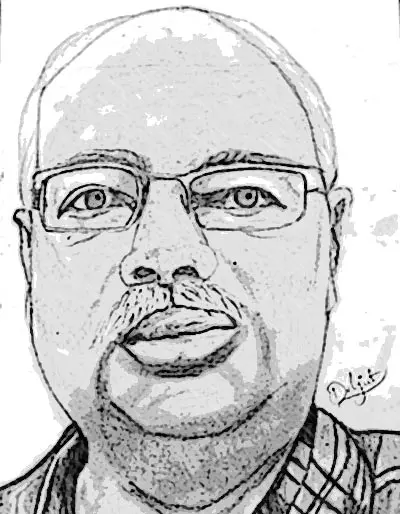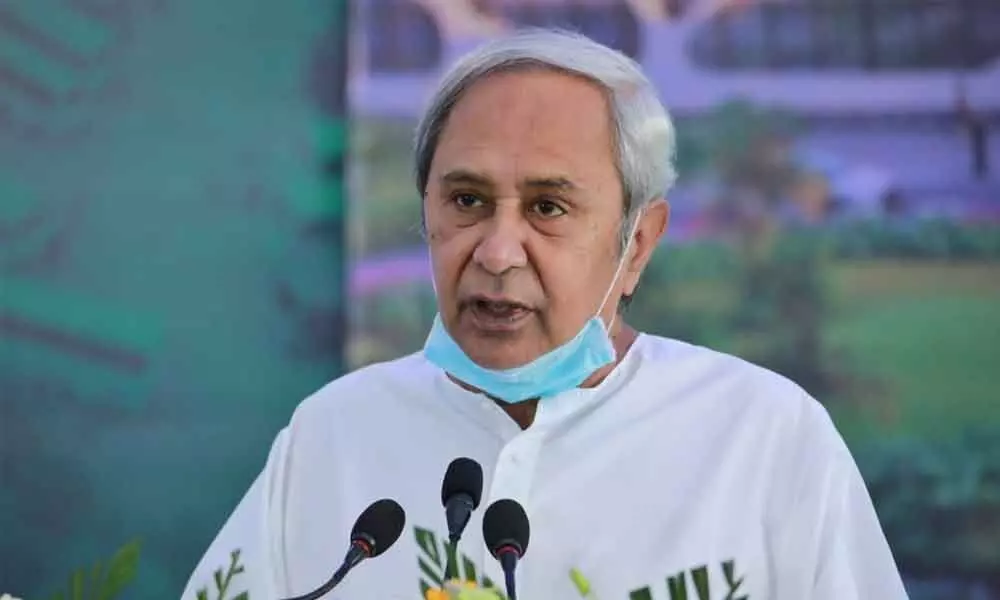Live
- Study Reveals Teabags Release Billions of Microplastics and Nanoplastics, Entering Your Body
- Kumbh Mela 2025: Essential Guide to Comfortable and Respectful Attire for Maha Kumbh
- Hyderabad Real Estate Faces Setback: Property Sales Drop 7% Year-on-Year in 2024
- Gnani’s Gen AI Solutions Revolutionising BFSI
- Trump's WHO threat sparks debate on the efficiency of global health governance
- ICC Champions Trophy 2025 Schedule: India vs Pakistan Match Set for February 23 in Dubai
- Champions Trophy 2025: Full Schedule, Match Dates, Venues, Timings, and Updates
- FRAI Urges Government to Provide Technology Platform for Kirana Stores to Stay Competitive
- Not just Gen Z, millennials too: Redditors discuss the wave of pet parenthood embraced by young Indians
- Innovation can expedite the journey to a Smoke-Free future- in focus at Technovation Abu Dhabi
Just In
Naveen carries forward father's rich legacy


Navin Patnaik
In our last Mad Angle, we gave an introduction of how India has been a dynastic democracy since Independence in different states. From this week onwards, we would be looking into the difference in the style of functioning between the father and sons who governed the states starting with Odisha.
In our last Mad Angle, we gave an introduction of how India has been a dynastic democracy since Independence in different states. From this week onwards, we would be looking into the difference in the style of functioning between the father and sons who governed the states starting with Odisha.
Biju Patnaik and his son Navin Patnaik have been at the helm of affairs in Odisha for about three decades. The New York Times in its obituary of Biju Patnaik wrote, "His reputation in India rested less on his performance as state government leader, or on his brief tenure as a Cabinet minister in the late 1970's in the Government in New Delhi, than on his daring exploits as a pilot in the years before and soon after India's independence in 1947."
Biju became the Chief Minister in 1961, following the mid-term elections. But as part of Kamaraj plan, he resigned in 1963. The plan had proposed that all senior politicians should resign from their posts to revitalise the Congress.
In 1969, Biju had serious differences with Indira Gandhi and had left Congress. During emergency, Indira Gandhi sent him to jail for six years. He later floated his own regional party Utkal Congress and merged it with Janata party in 1977. He also served as the Union steel minister (March 1977 to January 1980). In 1990, he again became the Chief Minister of Odisha after a gap of 27 years and got re-elected as chief minister in 1996. He died in 1997 at the age of 81.
In post-Independence years, Biju focussed on building an industrial empire in the economically backward state of Odisha. He helped in establishing textile mills, iron ore as well as manganese mines. He used his political influence at centre and succeeded in making Paradip port a premier marine gateway and construction of India's first integrated steel plant at Rourkela.
Biju is known as builder of modern Odisha. All most all the institutions and Industries build by Odisha government till date find its genesis either to the tenure of Biju Babu or Harekrushna Mahatab.
Biju babu was a successful pilot and wealthy businessmen even before he joined politics. He had established Kalinga airlines and owned several other industries.
Naveen Patnaik joined politics in his late 50's, he was a famous socialite and the only mentionable thing he did was to run a boutique and write three books. His entry to politics in 2000 was by chance and was due to political vacuum created by the fall of Congress and death of his father.
Biju was a frequent traveller and easily accessible and used to take problems head on and believed in local governance. Naveen Patnaik has a very different approach. He prefers to lead a secluded life and when in public meeting, prefers to read his written speech. He rarely comments on any issue. While Biju was known for his flamboyant style of living, Navin prefers simple life style. Unlike his father who used to target opponents publicly Naveen does not indulge in rhetoric. Biju was known for developing second line of leadership while this is absent in his son's regime.
Biju Babu, old timers say was against red tapism. He wanted everyone to work in top gear. His remarks like beat up corrupt officials resulted in some incidents where officials were manhandled.
"One humorous story goes around that when a traffic policeman caught a truck driver for over speeding while he was going with construction material for Paradip Port the truck driver replied to policeman that if he follows the prescribed speed port works would be delayed by many years."
Things changed after Naveen took over. His main thrust is citizen-centric governance and the focus is on 5 Ts— Technology, Transparency, Teamwork, Time and Transformation. As part of this move, occasionally the Chief Minister himself or his officers called common people, asking them if they are receiving all the government services properly.
Odisha, which was earlier facing poverty and had high infant mortality rate has now become a state whose economy is growing at a rate of about 6.9 percent. There has been reduction in poverty. Farmers income has doubled, and tourism has been given a boost. Naveen is known for having introduced maximum number of social welfare measures like the Rs 1 per kg rice for poor, KALIA scheme for farmers which is equivalent to PM-KISAN Yojana of Centre his government has touched all sections. Equal attention has also been laid on industrialisation and infrastructure.

© 2024 Hyderabad Media House Limited/The Hans India. All rights reserved. Powered by hocalwire.com






